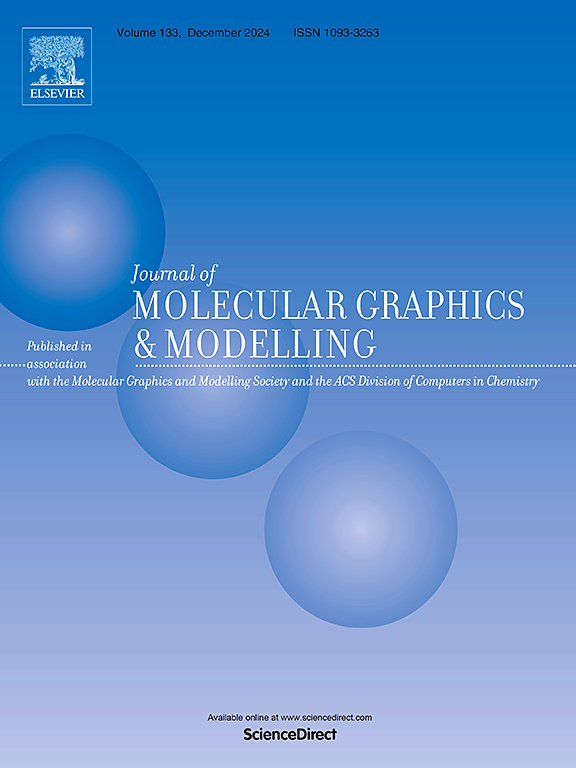Inhibitory mechanism of lithospermic acid on the fibrillation of type 2 diabetes associated islet amyloid polypeptide
IF 2.7
4区 生物学
Q2 BIOCHEMICAL RESEARCH METHODS
引用次数: 0
Abstract
The abnormal fibrillation of a 37-residue peptide hormone human islet amyloid polypeptide (hIAPP) is linked with type 2 diabetes (T2D). Pang et al. depicted a prominent role of lithospermic acid (LA) in blocking hIAPP fibrillation and alleviating the hIAPP aggregates-induced cytotoxicity. LA is a polyphenolic compound present in extra virgin olive oil with therapeutic properties. Despite its notable inhibitory effect on hIAPP fibrillation, the inhibition mechanism remains unclear. Here, molecular dynamics (MD) simulations have been utilized to shed light on the putative binding mechanism and inhibitory mechanism of LA against hIAPP fibrillation. The molecular docking predicted favourable binding (−7.1 kcal/mol) of LA with hIAPP. Interestingly, LA increases the helix content in hIAPP and blocks the conformational transition to the aggregation-competent conformations. The conformational clustering and hydrogen bond analyses depicted that LA formed hydrogen bonds with Asn21 of hIAPP, which play an important role in hIAPP aggregation. LA binds favourably to hIAPP (ΔGbinding = −49.62 ± 3.34 kcal/mol) with a major contribution from the van der Waals interactions. The MD simulations highlighted that LA dramatically interfered with the intrapeptide interactions and inhibited sampling of aggregation-competent β-sheet conformations in hIAPP via hydrogen bonds through its hydroxyl groups, van der Waals interactions with hIAPP residues, thus blocking hIAPP aggregation to β-sheet rich cytotoxic fibrillar aggregates. The MD simulations illuminated specific interactions between hIAPP and LA, which will benefit in developing new chemical entities against hIAPP fibrillation.

求助全文
约1分钟内获得全文
求助全文
来源期刊

Journal of molecular graphics & modelling
生物-计算机:跨学科应用
CiteScore
5.50
自引率
6.90%
发文量
216
审稿时长
35 days
期刊介绍:
The Journal of Molecular Graphics and Modelling is devoted to the publication of papers on the uses of computers in theoretical investigations of molecular structure, function, interaction, and design. The scope of the journal includes all aspects of molecular modeling and computational chemistry, including, for instance, the study of molecular shape and properties, molecular simulations, protein and polymer engineering, drug design, materials design, structure-activity and structure-property relationships, database mining, and compound library design.
As a primary research journal, JMGM seeks to bring new knowledge to the attention of our readers. As such, submissions to the journal need to not only report results, but must draw conclusions and explore implications of the work presented. Authors are strongly encouraged to bear this in mind when preparing manuscripts. Routine applications of standard modelling approaches, providing only very limited new scientific insight, will not meet our criteria for publication. Reproducibility of reported calculations is an important issue. Wherever possible, we urge authors to enhance their papers with Supplementary Data, for example, in QSAR studies machine-readable versions of molecular datasets or in the development of new force-field parameters versions of the topology and force field parameter files. Routine applications of existing methods that do not lead to genuinely new insight will not be considered.
 求助内容:
求助内容: 应助结果提醒方式:
应助结果提醒方式:


